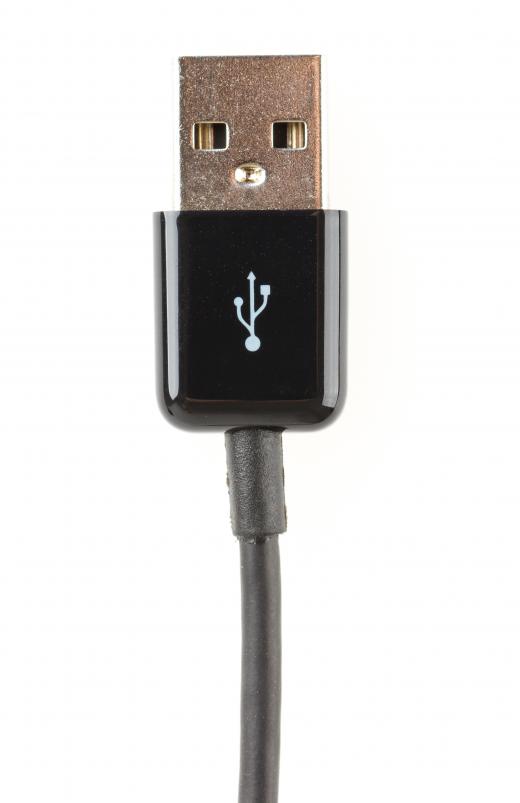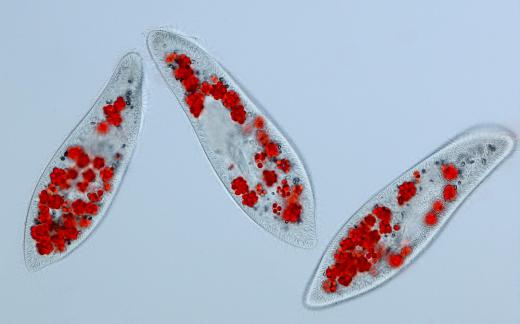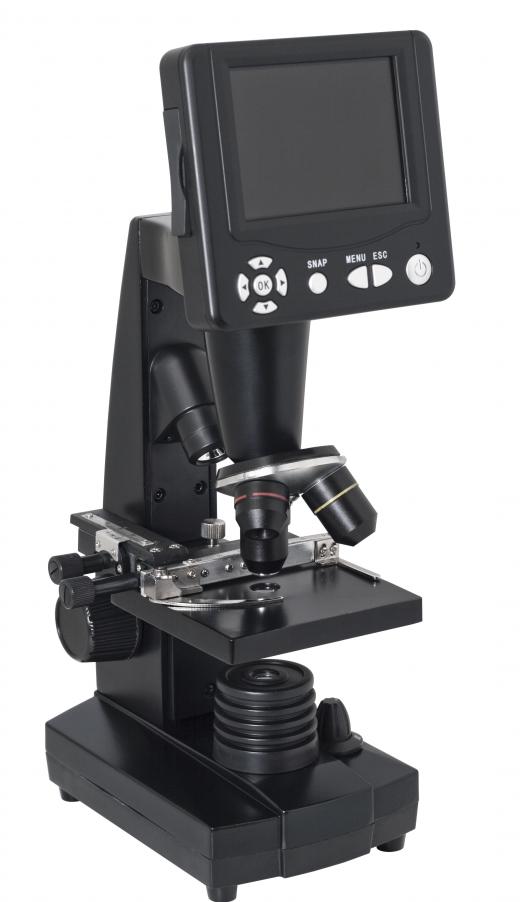How do I Choose the Best Digital Microscope?
 Mary Elizabeth
Mary Elizabeth
A digital microscope is one of two designs: either it is a set with two essential components, one an optical microscope, and the other a video camera or digital camera with a charge-coupled device (CCD). Or it is an integrated unit that combines microscope and camera. In either case, the device makes it possible to output as a digital image the view seen through the microscope. Which is the best for you will partly depend on whether you already have a microscope that you wish to convert to a digital microscope, and partly on the use or range of uses to which you wish to put the tool.
A digital microscope is useful for several purposes. First, capturing the view allows images to be saved for the purposes of record-keeping and transmission. The image can be stored, shared in documents, or transmitted over the Internet. Second, a projected view may save the examiner from bending over the microscope for a long period of time. Third, the larger projected image may make some things salient that weren’t as obvious looking through the microscope. Fourth, projecting the view makes it easier to share the view with a number of other people at the same time.

Some monocular optical microscopes are designed for the digital or video camera to fit over the one eyepiece, and some trinocular microscopes are made so that the camera of either type attaches to the third eyepiece which is especially designed for that purpose. Some digital microscopes come with the component parts when first purchased, while others are made by adding the camera, and—if necessary—a coupler to hold it, at a later time. With these attachments made, the result would be a digital microscope.

An integrated digital microscope differs in construction from an optical microscope in that it does not have an eyepiece. Instead of being a product of the magnification of the eyepiece and the objective, it is dependent on the enlarged replication on the monitor, so the size of the monitor is key. In addition, the lenses in the optical microscope are designed for the human eye, not the camera. Because of this, a digital microscope made by attaching a digital camera to an optical microscope may have an image of lesser quality than one created with an integrated digital microscope.

Some of the most sophisticated digital microscopes have an integrated camera-microscope and are sold with a monitor. For example, such models are built by Hirox, the Tokyo company—now international in scope—that built the first digital microscope in 1986. The invention of USB ports and Firewire made it possible to create a digital microscope that connects directly to a computer, and this has given rise not only to less expensive models, but also to toy models made for children. Children’s models particularly may have software with an application for doing activities with the images, such as making them into postcards or posters.
AS FEATURED ON:
AS FEATURED ON:














Discuss this Article
Post your comments